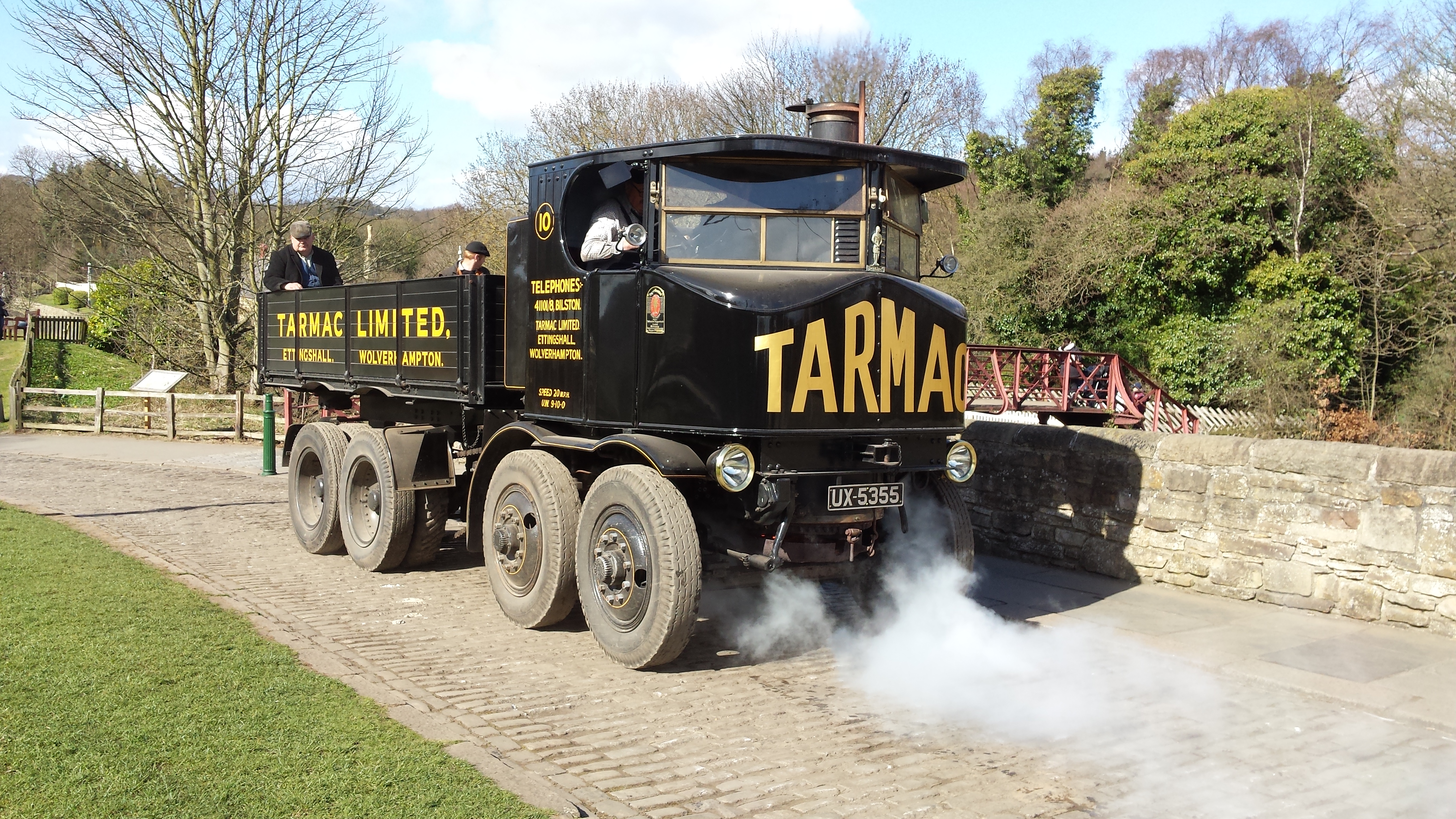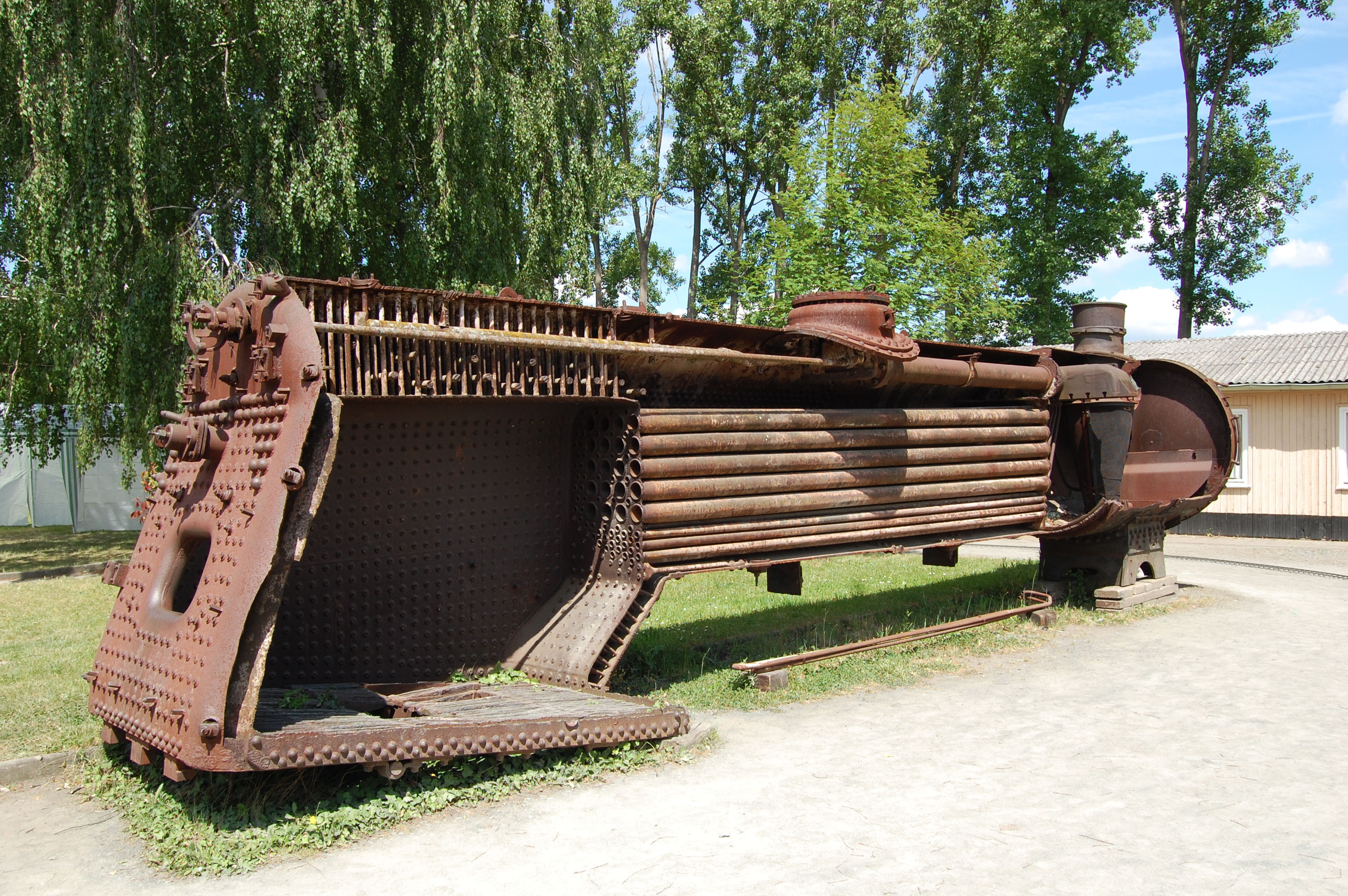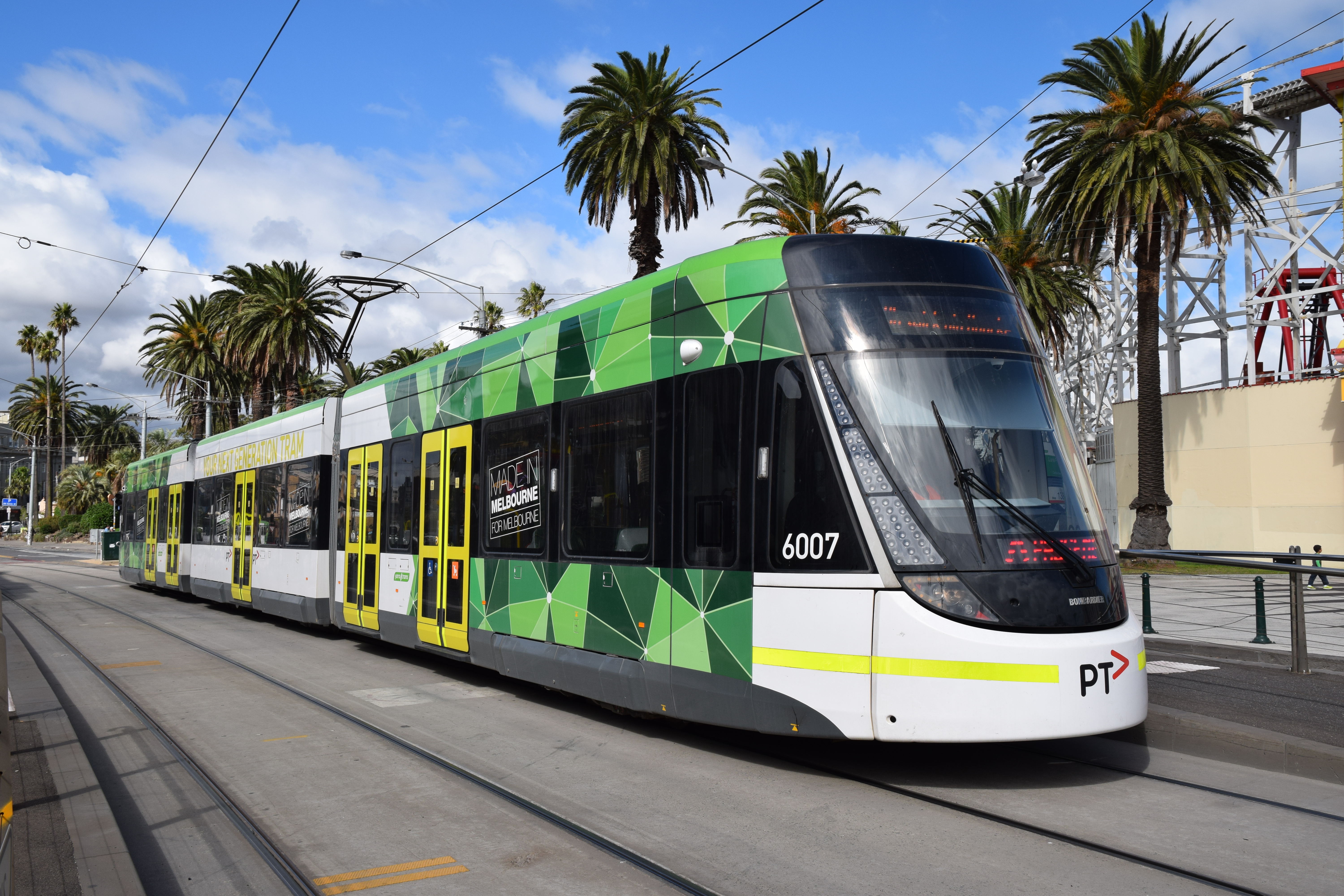|
LNER Class Y10
The LNER Class Y10 was a class of two 0-4-0T geared steam locomotives built by Sentinel Waggon Works for the London and North Eastern Railway and introduced in 1930. The LNER numbered them 8403 and 8404 but they were later re-numbered 8186 and 8187. This was the second use of the classification Y10 by the LNER. The first was for an ex-North British Railway 0-4-0 steam tender locomotive, withdrawn 1925. Both the Sentinels passed into British Railways ownership in 1948 but 8187 was withdrawn almost immediately. Number 8186 was allocated the BR number 68186, but never actually carried it, and was withdrawn in 1952. Power unit The superheated vertical water-tube boiler and the motor were similar to those used in Sentinel steam wagons. Each locomotive had two 2-cylinder engines, giving a total of . The engines had poppet valves and reversing was by sliding camshaft. The advantage of the water-tube boiler was that steam could be raised much more quickly than with a conventiona ... [...More Info...] [...Related Items...] OR: [Wikipedia] [Google] [Baidu] |
Sentinel Waggon Works
Sentinel Waggon Works Ltd was a British company based in Shrewsbury, Shropshire that made steam-powered lorries (steam wagons), railway locomotives, and later, diesel engined lorries, buses and locomotives. History Alley & MacLellan, Sentinel Works, Jessie Street Glasgow Alley & MacLellan was founded in 1875 and was based in Polmadie, Glasgow. This company continued in operation until the 1950s. Initially manufacturing valves and compressors for steam engines, and later whole steamships, Alley & MacLellan acquired Simpson and Bibby of Horsehay, Shropshire, manufacturer of steam-powered road vehicles, in 1903. They began producing steam road vehicles in 1905 and in 1906 introduced a five-ton vertical-boiler steam wagon, which featured a two-cylinder undertype engine and chain drive. Around 1915, Alley & McLellan moved the steam wagon production to a new factory to Shrewsbury and it continued under a separate company (see below), and in 1918 the company also opened a th ... [...More Info...] [...Related Items...] OR: [Wikipedia] [Google] [Baidu] |
Fire-tube Boiler
A fire-tube boiler is a type of boiler in which hot gases pass from a fire through one or more tubes running through a sealed container of water. The heat of the gases is transferred through the walls of the tubes by thermal conduction, heating the water and ultimately creating steam. The fire-tube boiler developed as the third of the four major historical types of boilers: low-pressure tank or " haystack" boilers, flued boilers with one or two large flues, fire-tube boilers with many small tubes, and high-pressure water-tube boilers. Their advantage over flued boilers with a single large flue is that the many small tubes offer far greater heating surface area for the same overall boiler volume. The general construction is as a tank of water penetrated by tubes that carry the hot flue gases from the fire. The tank is usually cylindrical for the most part—being the strongest practical shape for a pressurized container—and this cylindrical tank may be either horizontal or ve ... [...More Info...] [...Related Items...] OR: [Wikipedia] [Google] [Baidu] |
Tram Engines
A tram (called a streetcar or trolley in North America) is a rail vehicle that travels on tramway tracks on public urban streets; some include segments on segregated right-of-way. The tramlines or networks operated as public transport are called tramways or simply trams/streetcars. Many recently built tramways use the contemporary term light rail. The vehicles are called streetcars or trolleys (not to be confused with trolleybus) in North America and trams or tramcars elsewhere. The first two terms are often used interchangeably in the United States, with ''trolley'' being the preferred term in the eastern US and ''streetcar'' in the western US. ''Streetcar'' or ''tramway'' are preferred in Canada. In parts of the United States, internally powered buses made to resemble a streetcar are often referred to as "trolleys". To avoid further confusion with trolley buses, the American Public Transportation Association (APTA) refers to them as " trolley-replica buses". In th ... [...More Info...] [...Related Items...] OR: [Wikipedia] [Google] [Baidu] |
Railway Locomotives Introduced In 1930
Rail transport (also known as train transport) is a means of transport that transfers passengers and goods on wheeled vehicles running on rails, which are incorporated in Track (rail transport), tracks. In contrast to road transport, where the vehicles run on a prepared flat surface, rail vehicles (rolling stock) are directionally guided by the tracks on which they run. Tracks usually consist of steel rails, installed on Railroad tie, sleepers (ties) set in track ballast, ballast, on which the rolling stock, usually fitted with metal wheels, moves. Other variations are also possible, such as "slab track", in which the rails are fastened to a concrete foundation resting on a prepared subsurface. Rolling stock in a rail transport system generally encounters lower friction, frictional resistance than rubber-tyred road vehicles, so passenger and freight cars (carriages and wagons) can be coupled into longer trains. The rail transport operations, operation is carried out by a ... [...More Info...] [...Related Items...] OR: [Wikipedia] [Google] [Baidu] |
London And North Eastern Railway Locomotives
London is the capital and largest city of England and the United Kingdom, with a population of just under 9 million. It stands on the River Thames in south-east England at the head of a estuary down to the North Sea, and has been a major settlement for two millennia. The City of London, its ancient core and financial centre, was founded by the Romans as ''Londinium'' and retains its medieval boundaries.See also: Independent city § National capitals The City of Westminster, to the west of the City of London, has for centuries hosted the national government and parliament. Since the 19th century, the name "London" has also referred to the metropolis around this core, historically split between the counties of Middlesex, Essex, Surrey, Kent, and Hertfordshire, which largely comprises Greater London, governed by the Greater London Authority.The Greater London Authority consists of the Mayor of London and the London Assembly. The London Mayor is distinguished from the Lord M ... [...More Info...] [...Related Items...] OR: [Wikipedia] [Google] [Baidu] |
Sentinel Locomotives
Sentinel may refer to: Places Mountains * Mount Sentinel, a mountain next to the University of Montana in Missoula, Montana * Sentinel Buttress, a volcanic crag on James Ross Island, Antarctica * Sentinel Dome, a naturally occurring granite dome in Yosemite National Park, California * Sentinel Mountain (Montana), in Glacier National Park * Sentinel Peak (Alberta) * Sentinel Peak (Antarctica) * Sentinel Peak (Arizona), a peak in the Tucson Mountains * Sentinel Peak (British Columbia) * Sentinel Range, a mountain range in Antarctica * The Sentinel, Hout Bay * The Sentinel (Zion), a sandstone summit in Zion National Park, Utah Elsewhere * Sentinel, Arizona * Sentinel, California * Sentinel, Missouri * Sentinel, Oklahoma * Sentinel Island (other) Arts, entertainment, and media Artworks * ''Sentinel'' (sculpture), a 2000 sculpture by Tim Tolkien * ''Sentinels'' (Hudson), a 2005 public artwork by American artist Jon Barlow Hudson Comics * ''Sentinel'' (co ... [...More Info...] [...Related Items...] OR: [Wikipedia] [Google] [Baidu] |
Great Yarmouth
Great Yarmouth (), often called Yarmouth, is a seaside resort, seaside town and unparished area in, and the main administrative centre of, the Borough of Great Yarmouth in Norfolk, England; it straddles the River Yare and is located east of Norwich. A population of 38,693 in the 2011 Census made it Norfolk's third most populous. Its fishing industry, mainly for herring, shrank after the mid-20th century and has all but ended. North Sea oil from the 1960s supplied an oil-rig industry that services offshore natural gas rigs; more recently, offshore wind power and other renewable energy industries have ensued. Yarmouth has been a resort since 1760 and a gateway from the Norfolk Broads to the North Sea. Holiday-making rose when a railway opened in 1844, bringing easier, cheaper access and some new settlement. Wellington Pier opened in 1854 and Britannia Pier in 1858. Through the 20th century, Yarmouth boomed as a resort, with a promenade, pubs, trams, fish-and-chip shops, theatr ... [...More Info...] [...Related Items...] OR: [Wikipedia] [Google] [Baidu] |
GER Class C53
The GER Class C53 was a class of twelve steam tram locomotives designed by James Holden for the Great Eastern Railway. They passed to the London and North Eastern Railway at the grouping, and received the LNER classification J70. History These locomotives had outside cylinders driving wheels; all enclosed by skirting. They were the first locomotives on the Great Eastern to use Walschaerts valve gear. They were used on the Wisbech and Upwell Tramway and the ports of Great Yarmouth and Ipswich from the 1930s to the 1950s. They replaced earlier GER Class G15 of similar appearance. The first withdrawal was in 1942. The remaining locomotives were renumbered 8216–8226 in 1944. The remaining eleven locomotives passed to British Railways in 1948 on nationalisation, and had 60000 added to their numbers. Withdrawals restarted in 1949, slowly at first, then more quickly, and the last went in 1955. In fiction J70 68221 was the inspiration for the character Toby the Tram Engi ... [...More Info...] [...Related Items...] OR: [Wikipedia] [Google] [Baidu] |
Pilot (locomotive)
A cowcatcher, also known as a pilot, is the device mounted at the front of a locomotive to deflect obstacles on the track that might otherwise damage or derail it or the train. In the UK small metal bars called ''life-guards'', ''rail guards'' or ''guard irons'' are provided immediately in front of the wheels. They knock away smaller obstacles lying directly on the running surface of the railhead. Historically, fenced-off railway systems in Europe relied exclusively on those devices and cowcatchers were not required, but in modern systems cowcatchers have generally superseded them. Instead of a cowcatcher, trams use a device called a fender. Objects lying on the tram track come in contact with a sensor bracket, which triggers the lowering of a basket-shaped device to the ground, preventing the overrunning of the obstacles and dragging them along the road surface in front of the wheels. In snowy areas the cowcatcher also has the function of a snowplough. Invention The cowca ... [...More Info...] [...Related Items...] OR: [Wikipedia] [Google] [Baidu] |
Tram Engine
A tram engine is a steam locomotive specially built, or modified, to run on a street, or roadside, tramway track. Legal requirements In the steam locomotive era, tram engines had to comply with certain legal requirements, although these varied from country to country: * The engine must be governed to a maximum speed of ( in the UK) * No steam or smoke may be emitted * It must be free from the noise produced by blast or clatter * The machinery must be concealed from view at all points above from rail level *Most of the locomotives must have a cab at each end To avoid smoke, the fuel used was coke, rather than coal. To prevent visible emission of steam, two opposite systems were used: * condensing the exhaust steam and returning the condensate to the water tank * Reheating the exhaust steam to make it invisible Builders United Kingdom ;Great Eastern Railway The Great Eastern Railway built ten Class G15 0-4-0T trams from 1883 to 1897 and twelve Class C53 0-6-0T trams ... [...More Info...] [...Related Items...] OR: [Wikipedia] [Google] [Baidu] |
Wisbech And Upwell Tramway
The Wisbech and Upwell Tramway was a rural standard gauge tramway in East Anglia. It was built by the Great Eastern Railway between Wisbech, Isle of Ely, Cambridgeshire and Upwell, now in Norfolk to carry agricultural produce. Although called a tramway, in many ways it more closely resembled a conventional railway line, and paved the way for the passing of the Light Railways Act 1896. History The Great Eastern Railway (GER) promoted the idea of a tramway between Wisbech and Upwell, and permission to construct the line was obtained by W. L. Ollard in 1873, but he failed to raise the finance to build it. The GER were still in favour of the line, and authorisation to construct it was enshrined in the Great Eastern Railway Act 1881. As well as carrying passengers, it was always intended as a freight line as well, and to this end it was built to standard gauge, with bull-head rails, rather than the tramway rails favoured by many British tramways. This allowed standard goods wagons ... [...More Info...] [...Related Items...] OR: [Wikipedia] [Google] [Baidu] |






